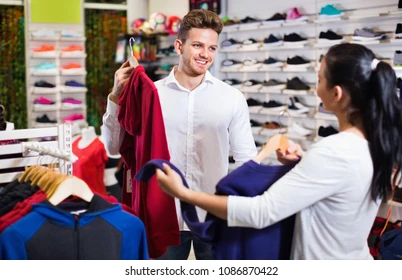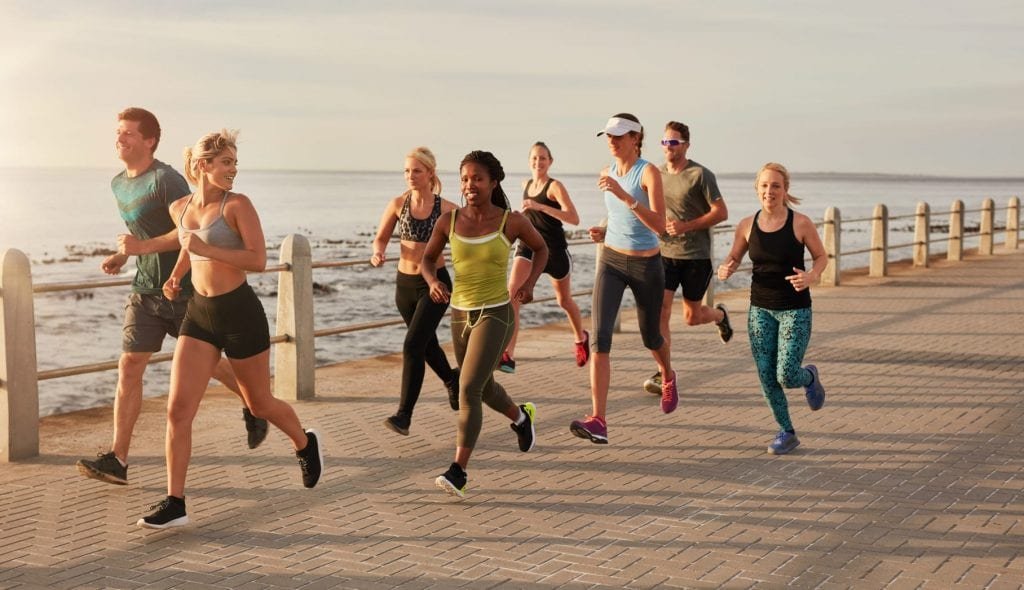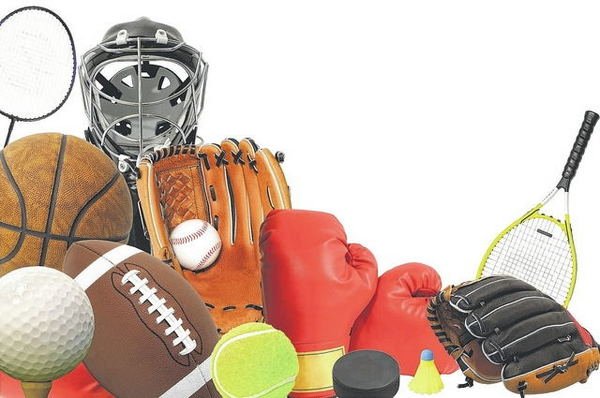Picture this: It’s a crisp fall morning, and I’m lacing up my sneakers for a jog—not because I’m training for a marathon, but because somewhere along the way, a killer Instagram reel from a fitness influencer convinced me that moving feels better than scrolling. That seamless shift from couch potato to casual runner? It’s no accident. Sportswear brands have turned the act of sweating into a style statement, pulling in folks like me who once thought “athleisure” was just fancy pajamas. As someone who’s tested dozens of leggings through trial, error, and the occasional wardrobe malfunction, I’ve seen firsthand how these companies are rewriting the rules to hook newcomers. In a market exploding toward $350 billion by 2032, they’re not just selling clothes; they’re selling a vibe—one that’s inclusive, eco-smart, and downright addictive.
The Rise of Sportswear: Why Everyone’s Joining the Game
The sportswear boom isn’t some fleeting fad; it’s a cultural quake shaking up closets worldwide. With athleisure now the go-to for everything from Zoom calls to coffee runs, brands are cashing in on a post-pandemic craving for comfort that performs. Health apps ping us to hit 10,000 steps, TikTok challenges dare us to plank longer, and suddenly, that baggy tee feels outdated. But here’s the twist: 59% of shoppers switch brands between buys, hunting for something fresh that fits their life. Newcomers—think busy parents dipping into yoga or Gen Z’ers blending gym sessions with street style—are the golden ticket. Brands know this, pouring resources into tactics that make entry feel effortless, not intimidating.
Digital Magic: Social Media’s Pull on Fresh Faces
Social platforms aren’t just for cat videos anymore; they’re the front door for sportswear discovery. Instagram and TikTok serve up bite-sized workouts and outfit inspo that make you think, “Hey, I could do that.” Brands like Nike flood feeds with user-generated content, turning everyday folks into mini-ambassadors. It’s smart—66% of undecided shoppers start their journey here. For newbies, this low-pressure scroll turns curiosity into cart adds, blending education with entertainment.
Influencer Partnerships: The Trust Hack
Influencers are the cool friend who says, “Try this—it changed my routine.” Collaborations like Adidas with rising stars or Lululemon’s yoga gurus feel genuine, not salesy. They demo gear in real sweat sessions, answering the “Will this survive my clumsy downward dog?” question before you buy. In 2025, expect more micro-influencers—those with 10K followers but fierce loyalty—who keep it relatable for beginners.
Viral Challenges and User-Generated Buzz
Who hasn’t attempted a #PlankChallenge after seeing it everywhere? Brands seed these with branded hashtags, rewarding participants with discounts. It’s emotional glue: You post your wobbly attempt, get likes, and boom—you’re invested. New shoppers love the community feel; it eases the “Am I sporty enough?” jitters.
Sustainability: Green Gear That Hooks the Conscious Crowd
Gone are the days of fast-fashion guilt trips. Today’s newcomers demand threads that don’t trash the planet—think recycled ocean plastic in Adidas Parley lines or Nike’s zero-waste push. It’s not preachy; it’s practical. A beginner eyeing leggings wants durability without the eco-dread. Brands spotlight this in storytelling, like Patagonia’s repair cafes, making sustainability a badge of smart shopping.
Eco-Materials That Perform Without Compromise
Moisture-wicking fabrics from recycled bottles? Sign me up. These innovations attract eco-newbies by promising performance plus purpose. Lululemon’s seaweed-blended yoga pants, for instance, flex like pros while whispering “good for the earth.” It’s a win that feels virtuous, not virtuous-signaling.
Transparent Supply Chains Building Lasting Loyalty
Ever wonder where your shorts were made? Brands like Everlane spill the beans with traceability maps, turning skeptics into superfans. For first-timers, this transparency cuts through greenwashing noise, fostering trust that keeps them coming back.
Innovation in Action: Tech That Makes Sweat Stylish
Sportswear’s secret sauce? Gadgets and fabrics that turn workouts into wizardry. Compression gear that boosts circulation or shoes with app-linked cushioning—it’s catnip for tech-curious beginners. Hoka’s plush runners hooked me after one bouncy mile; suddenly, running wasn’t punishment. With AR try-ons via apps, shopping’s a game, not a gamble.
Smart Fabrics and Wearable Wins
From UV-blocking tees to antimicrobial socks, these bells and whistles solve real newbie pains—like chafing on your first hike. On Running’s cloud-like soles make strides feel effortless, drawing in walkers who fear blisters.
Customization: Your Gear, Your Rules
Personalization is the ultimate “welcome aboard.” Nike By You lets you doodle designs, turning bland basics into badges of self. For newcomers, it’s empowering—your first pair feels like yours, boosting that emotional buy-in.
Experiential Hooks: From Pop-Ups to Community Sweat
Brands aren’t content with clicks; they’re crafting moments that stick. Pop-up run clubs or Lululemon’s free yoga in parks pull in fence-sitters with zero commitment. I stumbled into one last summer—left with sore calves and a membership. These events humanize the hustle, making sportswear social.
In-Store Immersion and Virtual Trials
Retailers like REI turn shops into playgrounds with gear-testing zones. Online? AR mirrors let you “try” before buy, slashing returns for hesitant shoppers. It’s frictionless fun that converts browsers to buyers.
Collaborations with Everyday Events
Tying into local marathons or wellness fests, brands sponsor newbie-friendly vibes. Think Puma’s glow-run nights—lights, music, and swag that make exercise a party, not a chore.
Challenger Brands vs. Giants: A Fresh Face Face-Off
The market’s a battlefield: Incumbents like Nike hold 28% share, but challengers like On Running snag 3% growth by nailing “for me” vibes. Newbies flock to underdogs for affordability and edge—Hoka’s chunky soles scream “I’m starting, but stylishly.”
| Aspect | Challenger Brands (e.g., On Running, Hoka) | Incumbents (e.g., Nike, Adidas) |
|---|---|---|
| Target Newbies | Niche focus: Trail runners, casual walkers | Broad appeal: Everyone from pros to pros-wannabes |
| Innovation Speed | Agile drops, trendy collabs | Tech-heavy, but slower pivots |
| Price Point | Mid-tier ($80-150) | Premium ($100-200+) |
| Growth 2019-2024 | +3% market share | -3% combined |
| Attraction Tactic | Community events, sustainability stories | Celebrity endorsements, global ads |
This table highlights why upstarts are stealing hearts— they’re nimble, narrative-driven, and newbie-nurturing.
Pros and Cons of Key Attraction Strategies
- Influencer Collabs
- Pros: Builds instant trust; reaches niche audiences fast.
- Cons: Risk of inauthenticity if mismatched; high costs for big names.
- Sustainability Focus
- Pros: Appeals to 67% of value-driven shoppers; long-term loyalty.
- Cons: Higher production costs passed to buyers; greenwashing backlash.
- Digital/AR Tools
- Pros: Reduces returns by 20%; fun, accessible for remote shoppers.
- Cons: Tech barriers for older newbies; privacy concerns.
- Experiential Events
- Pros: Creates emotional bonds; word-of-mouth gold.
- Cons: Weather-dependent; limited geographic reach.
These lists boil down why brands mix strategies—balance the buzz with the budget.
People Also Ask: Real Questions from Curious Shoppers
Drawing from Google’s top queries, here’s the scoop on what newbies are typing into search bars right now.
What Makes Sportswear Brands Appeal to Beginners?
Beginners crave gear that’s forgiving and fun—think breathable fabrics that hide sweat stains and shoes with plush cushioning. Brands like New Balance excel here with wide fits and entry-level prices around $80, easing the intimidation factor. It’s about starting small without feeling small.
How Do Influencers Help Attract New Sportswear Buyers?
Influencers bridge the gap by showing real-life use: A quick HIIT in those leggings? Sold. Partnerships like Gymshark’s with micro-fitness stars boost engagement by 60%, turning scrolls into sales for 79% of viewers. They’re the relatable nudge.
Where to Find Affordable Sportswear for First-Timers?
Start at Old Navy’s active line—$20 tees that perform—or Amazon for Hoka dupes under $50. For quality jumps, check REI’s outlet for 30% off brands like Patagonia. Navigational tip: Filter by “beginner” on sites like Dick’s Sporting Goods.
Best Tools for Starting a Sportswear Routine?
Apps like Nike Training Club offer free beginner workouts synced to gear purchases. Pair with a Fitbit for tracking—brands bundle discounts. Transactionally, snag a starter kit from Lululemon’s “Essentials” bundle for $100, covering basics without overwhelm.
Best Sportswear Brands for New Shoppers in 2025
For those dipping toes, here’s a curated comparison covering informational (what to know), navigational (where to buy), and transactional (top picks).
| Brand | Why for Beginners? | Price Range | Where to Get | Standout Product |
|---|---|---|---|---|
| Hoka | Plush cushioning forgives bad form | $130-160 | Hoka.com, REI | Bondi 8 sneakers—cloud-like entry to running |
| New Balance | Wide sizes, retro vibe | $80-120 | Newbalance.com, Nordstrom | 574 core—versatile for walks to weights |
| Lululemon | Buttery-soft, inclusive sizing | $90-140 | Lululemon.com, malls | Align pants—yoga staple that transitions to errands |
| Old Navy | Budget-friendly basics | $20-50 | Oldnavy.gap.com, stores | Go-Dry tees—sweat-wicking without breaking bank |
| On Running | Lightweight, motivational feel | $140-170 | On.com, Dick’s | Cloud 5—effortless stride for casual jogs |
These picks balance performance with approachability, perfect for your first haul.
FAQ: Answering Your Burning Sportswear Questions
What’s the Best Way for Brands to Attract Gen Z Newbies?
Gen Z wants authenticity over ads—67% trust UGC over polished promos. Brands like Gymshark nail it with TikTok challenges and sustainable drops, blending fun with values to hook 18-24-year-olds scrolling for inspo.
How Has Sustainability Changed Sportswear Shopping for Beginners?
It levels the field—eco-lines like Adidas Parley make green accessible at $60, not $200. Newbies feel empowered choosing planet-friendly without sacrifice, with 63% prioritizing it in buys.
Where Can I Find Sportswear Collaborations for Limited Drops?
Hunt on Resale sites like StockX for hyped collabs like Nike x Sacai, or follow brand IG for alerts. Nav tip: Apps like Depop surface newbie-friendly seconds at 50% off.
Are Challenger Brands Better for First-Time Buyers Than Big Names?
Often yes—On Running’s niche focus feels personal, unlike Nike’s mass appeal. But mix ’em: Start with challengers for edge, scale to giants for reliability. Pros cite 3% faster growth for upstarts.
How Do I Know If a Sportswear Brand Fits My Beginner Routine?
Test via 30-day trials from sites like Zappos. Focus on fit (try in-store) and reviews—aim for 4+ stars on moisture-wicking. Tools like AR on brand sites simulate wear.
Whew, we’ve covered a lot of ground—from viral hooks to green dreams—but the real magic? It’s in that first step you take, gear hugging just right. Brands are evolving to meet us there, turning “maybe tomorrow” into “let’s go now.” What’s your next move? Lace up and see where it takes you.



